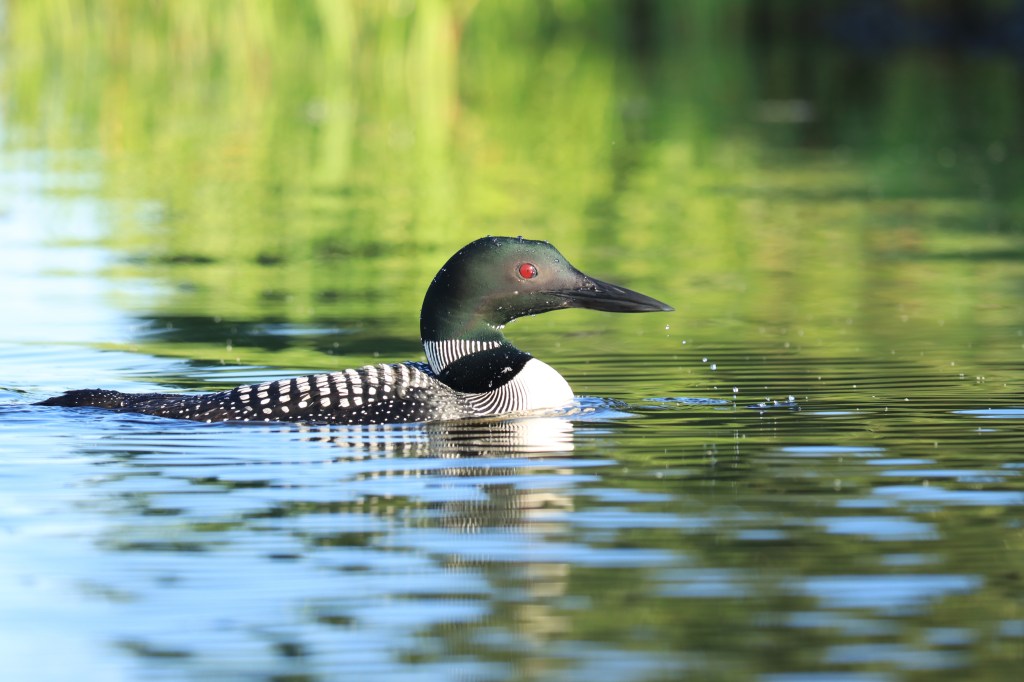
I’ve seen that bird before, but not here.
Using my zoom lens like a pair of binoculars, I fixate on a pale-bodied woodpecker with a distinct cherry tomato nape on the back of its head, and black and white checkered wings. It’s not a Hairy or a Downy– the ‘regulars’.
It’s a Red-bellied Woodpecker, a bird I’d first observed a few months earlier on a canoe-camping trip in Frontenac Park. I take a few photos, but the woodpecker is so high up in the tree that I know it will be difficult to see clearly.
I stand silently in the snow, watching the woodpecker hammer frozen bark in a calming drumbeat. I lose myself in the peacefulness of the moment, like being mesmerized by a flickering campfire.
For a few glorious minutes, I forget about the pandemic and the lockdown and Donald Trump and virtual schooling and the sad reality that, due to travel restrictions, I haven’t seen my boyfriend since 2019.
It’s similar to the feeling that I get at the end of a yoga class, when I’m lying on my back with my eyes closed.
Worrying about nothing.
Thinking about nothing.
Breathing in. Breathing out.
I take another photo just before the woodpecker flies away.
Such is the beauty of birding.
*
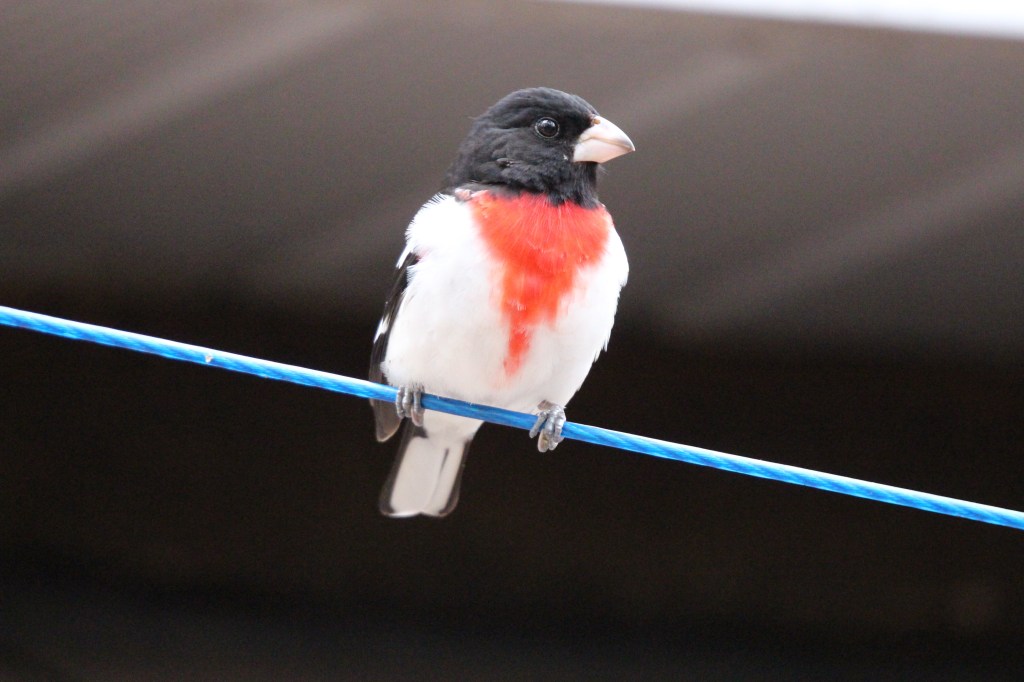
I somehow unexpectedly and unintentionally fell into birding, much like other people fell into baking or puzzling or home fitness during the COVID-19 pandemic.
After I was forced to cancel a March Break trip to Ecuador, I went to my parents’ cottage in Norway Bay, Quebec for what I had thought would be three weeks: a week of Spring Break followed by two additional weeks of school closures as we waited for the pandemic to clear.
Three weeks became six months.
My brother even mailed me some spring and summer clothes from Toronto via Canada Post: a few t-shirts, shorts, a couple of summer dresses to save me a drive.
To give myself a break from virtual teaching and long hours in front of a screen, I went for walks behind my cottage, and worked on my photography skills by taking pictures of wildlife. Birds were particularly challenging subjects to practice on because most of them don’t pose or wait for the photographer to be ‘ready’.
Photographing birds introduced me to diverse species that I had never noticed before, despite coming to the cottage since I was a kid. I became addicted to learning as much as I could about the birds in my backyard and brought my camera everywhere I went– on walks along the beach, kayaking, on bike rides, and on drives–so I would always be ready to capture a chance encounter with a rare species.
Throughout the pandemic, as more and more milestones were cancelled, like my high school’s graduation and several friends’ weddings, birding was a constant, reliable source of joy. It was something I was always allowed do, as everything else was shutdown.
Birding also taught me many lessons. Here are a few of them.
Adventure can happen in my own backyard

I have spent the last decade actively seeking adventures away from home—Hiking in Patagonia, teaching in Colombia and the High Arctic, cycling in Spain and Italy. The more I learned about diverse people, cultures and environments, the more I would learn about myself.
Learning about the birds in my backyard has sparked similar feelings of excitement and aliveness that I get through travel. It seems that encounters with the ‘unknown’ can happen wherever we are in the world and when we stay still enough to pay attention to our surroundings, we give ourselves a chance to know a place more deeply.
In Spring 2020, after the river thawed, my parents and I acted like wildlife safari guides and tracked a family of eagles that nested nearby. We learned which trees they preferred to perch on as they hunted and were able to predict where they would be depending on the time of day.
We watched three eaglets grow into juvenile eagles and saw them hunt for the first time. I felt like a cameraperson filming a nature documentary as I watched one juvenile eagle feed its sibling some sort of small mammal (from the photos we think it might be some sort of weasel?).
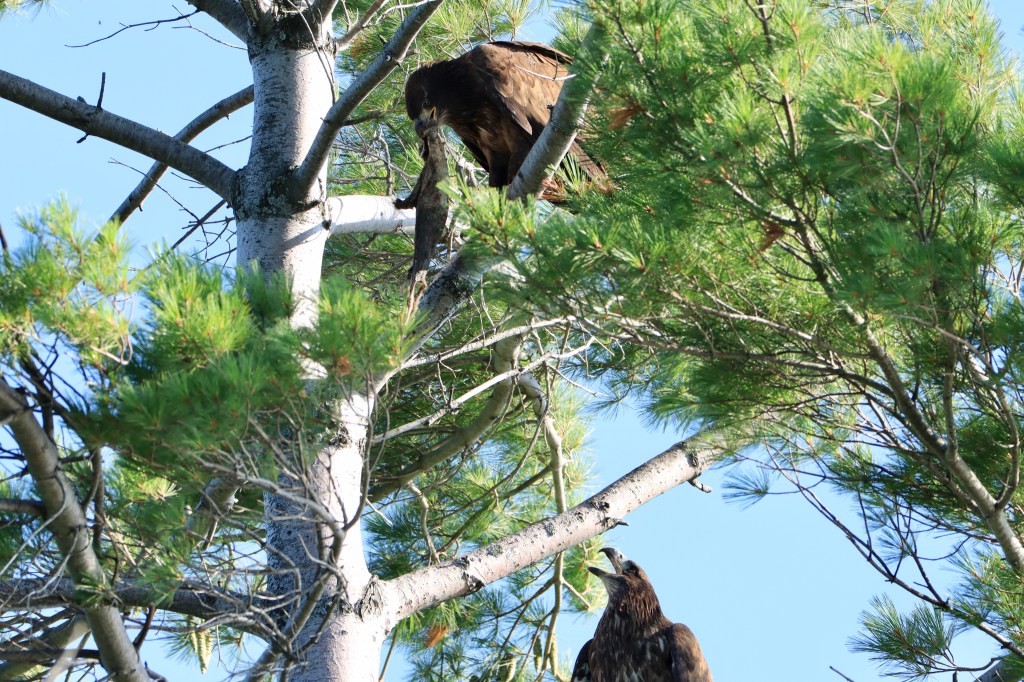
Although I had originally planned to spend the summer of 2020 teaching a course in Costa Rica and the rest of my time in Ecuador, being able to adventure in my own backyard helped me develop deeper knowledge for one of the places I call home.
There is beauty in the ordinary

Pre-pandemic, a few of my friends from Toronto came to the cottage for a weekend getaway. When they saw all of the blue jays that come to our feeder, they immediately got out their phones to take pictures and videos of them, commenting on how “pretty” and “colourful” they are. For me, blue jays are quite common so I rarely take pictures of them.
As the pandemic progressed many everyday things like going to work, meeting up with friends, going to the gym, making plans, were canceled. The ordinary, common birds like blue jays, chickadees, blackbirds, and nuthatches, started to bring me just as much, if not more joy, than the rare species I was discovering.
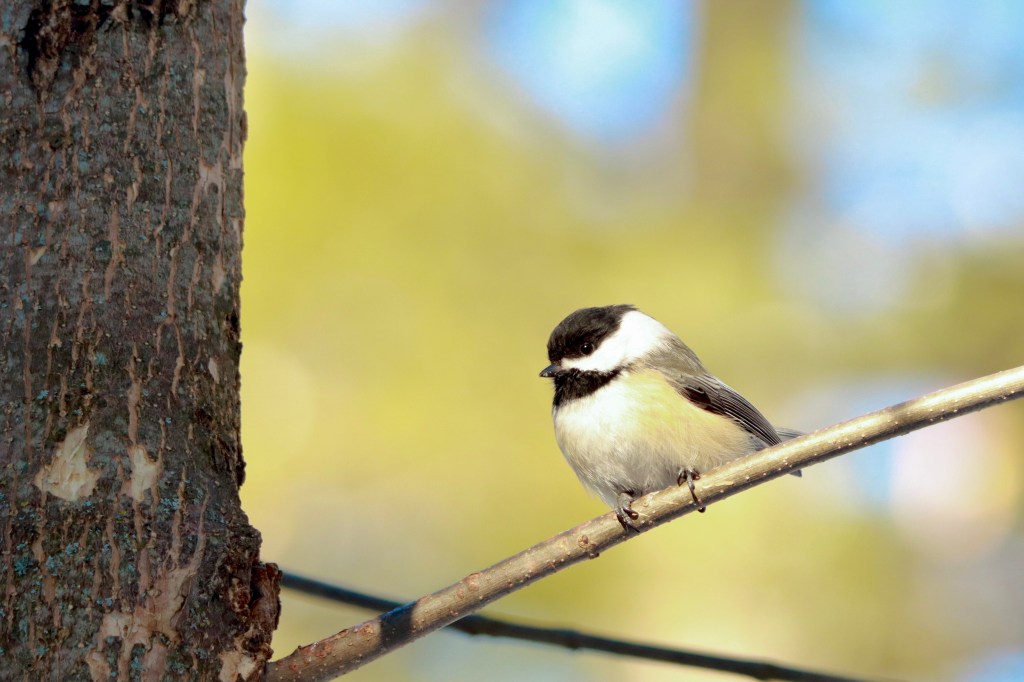
From hearing the sweet whistle of the chickadees to watching nuthatches battle each other for space at the feeder to noticing the innocent way that song sparrows hop over a log pile, I found comfort in paying attention to the familiar while the world was transforming in unimaginable ways.
I also found myself appreciating the ordinary, everyday moments in my daily routine that stayed constant through this time of turbulence and change.
I quickly learned how much I had taken the ordinary, everyday routines in my life for granted.
Little things like my morning coffee, chats with friends, students showing up for virtual classes, and watching the sunset with my parents: these little doses of normalcy provided a sense of comfort and routine when so much of life was out of my control. Not surprisingly, I started to take more pictures of blue jays!
Borders are both real and artificial
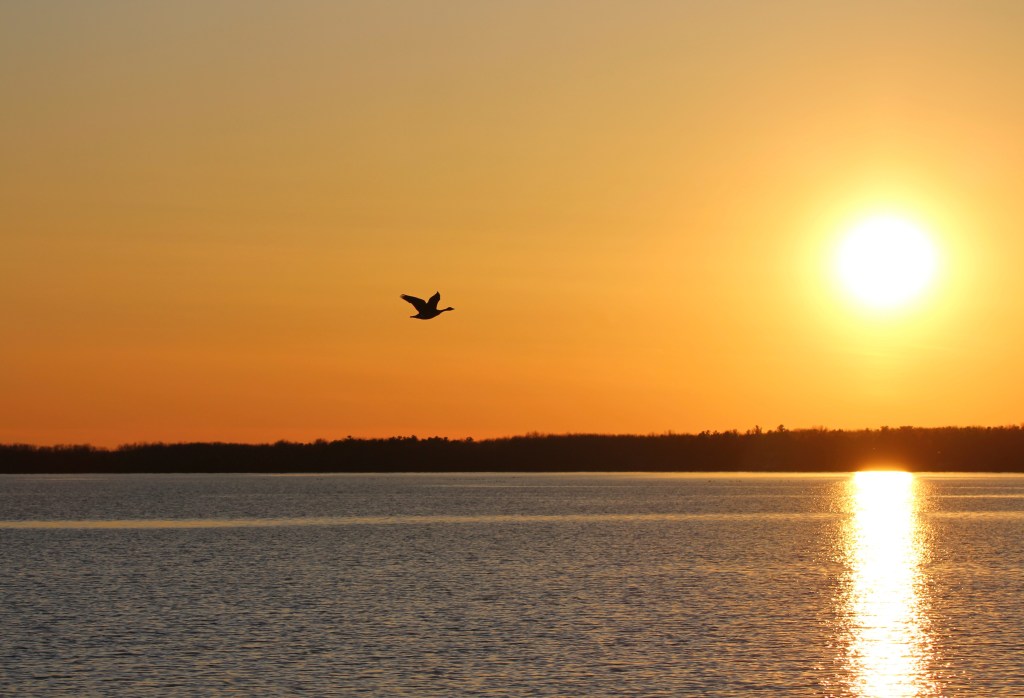
My cousin Laura texted me a video of Canada Geese on the Ottawa River a couple of days after the Quebec government closed the borders between Ontario and Quebec.
We had been talking a lot about the consequences of borders in the previous weeks. How long would her American fiancé be able to stay in Canada? If he went back to the US, would he be able to come back? Should my boyfriend and I continue an already complicated relationship now that international borders were closed indefinitely? When would we be able to return to Ontario? Would our friends and family be able to travel to their cottages in Quebec at all this summer?
For the next couple of weeks, we watched as what must have been thousands of geese flew overhead. It was like this section of the Ottawa River in front of Laura’s cottage had transformed into a migratory check point.
Migratory birds represented a freedom we no longer had, something we had clearly took for granted with our Canadian passports and cosmopolitan international lives. While we were stuck within our provincial and national borders, the birds were free to continue their journeys.

Throughout the spring migration, we connected with friends, coworkers, and loved ones in different postal codes via Whatsapp, Zoom, Google Meets, Microsoft Teams, and other platforms for meeting in cyberspace. We showed that we could transcend border closures. Even though this feeling of connection was artificial, it allowed us to maintain relationships across borders.
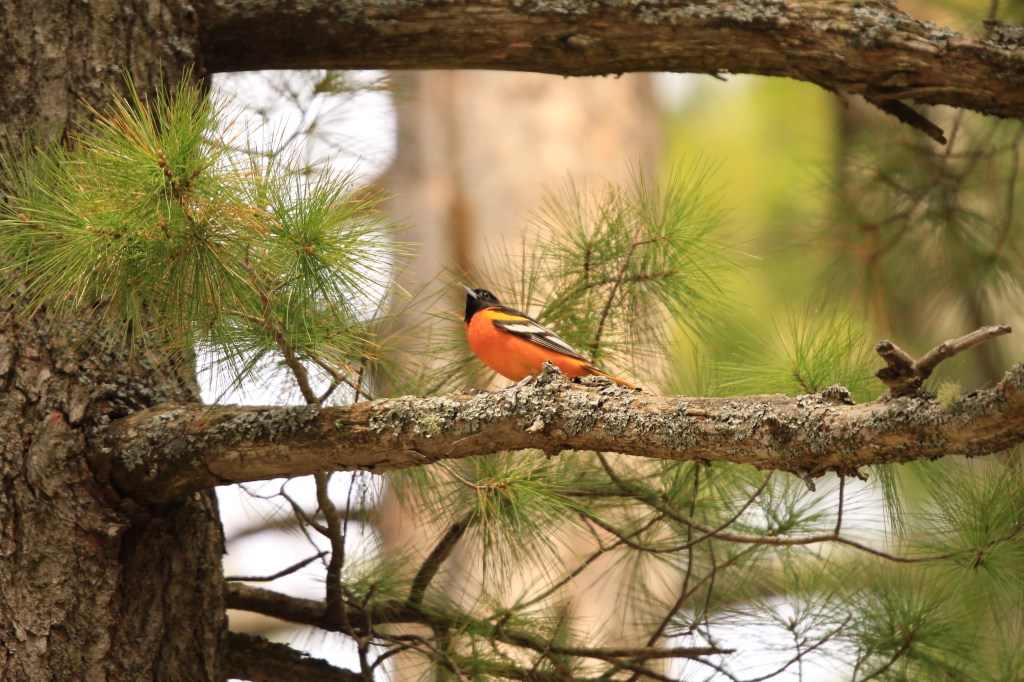
Now more than a year has passed and the birds are traveling north in the spring migration once again. I continue to take pictures, excited by the return of the blackbirds and the herons, and warblers, and other migratory birds, inspired by the freedom of their movement and fueled with hope that, we too, will be able to cross borders this season.
Being Present Brings Joy

Prior to the pandemic, I began the training process of completing the 200-hr Yoga Instructor certification. It felt timely that I had been learning about the health benefits of being still and living in the present moment at a time when we couldn’t do much else.
I was surprised to learn that birding required me to practice mindfulness in a similar way that yoga does. Often with birding, we hear birds before we can see them. So in order to identify birds, I need to be still, breathe, listen and wait for them to appear.
Once I learned the whistle of a Cedar Waxwing, I started seeing them quite regularly around my cottage. I had never seen them before and suddenly they were everywhere—in cedar trees in the islands I passed when I went out kayaking, or trees I biked by while cycling in Gatineau Park. Learning to be more present allowed me to see birds that I had been passing by year after year without really noticing them.
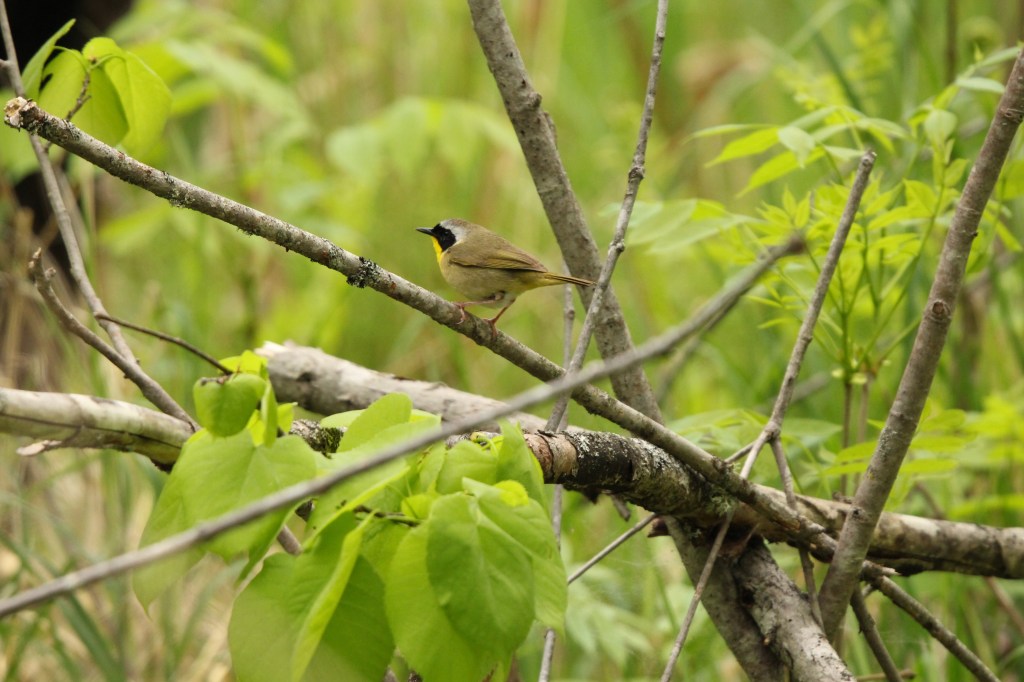
I have a habit of taking on too many responsibilities to the point where I often feel like I’m sprinting towards a dead end. Birding has helped me to learn that when we are quiet and still, what we are seeking can show up when we least expect it.
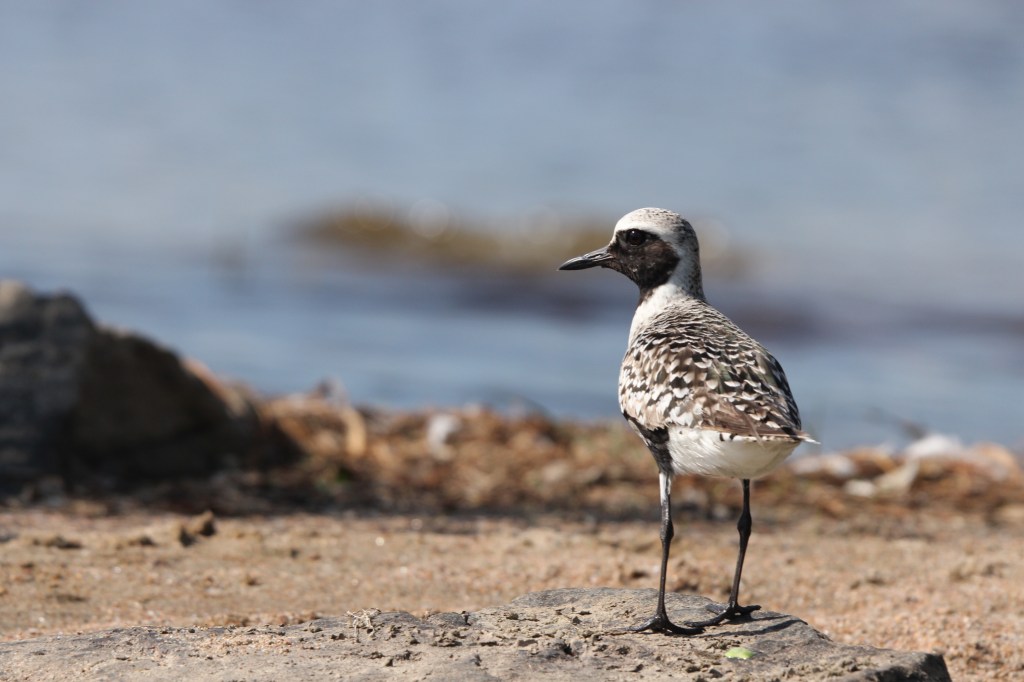
When I’m observing or photographing a bird, whether a common sparrow or a rare owl, all that matters in that moment is watching the bird exist as it is. When I look at a bird, I am captivated by beauty. I am not doing anything else or thinking about anything else. I’m just present with something beautiful in nature.
So why do I like birding so much? It brings me joy. It forces me to slow down, be still, and pay attention to the everyday moments of beauty.
Birds connect us.
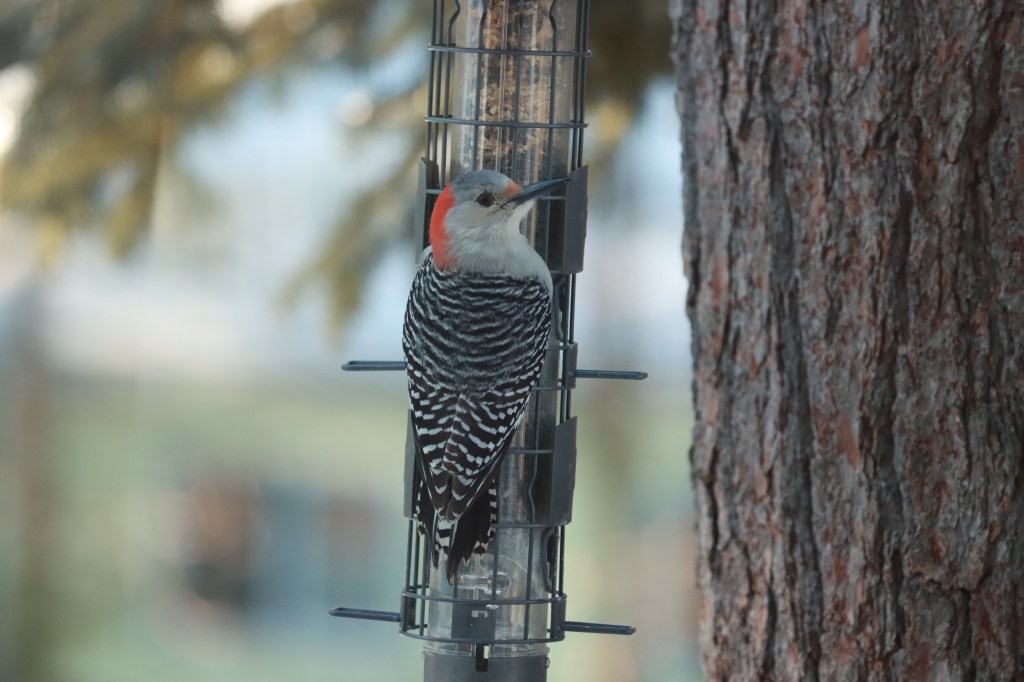
The last year of lockdowns and social isolation have been very difficult. Birding has helped me manage these feelings of loneliness and disconnection. When I’m looking for birds, I don’t feel “lonely” even if I am alone. Instead, the solitude in nature brings me a sense of peacefulness and calm. I feel connected to the environment around me- the trees, the elements, and of course, the birds. Hearing birds chirp, call and sing, also reminds me that nature continues to thrive around me, which inspires me to feel more resilient.
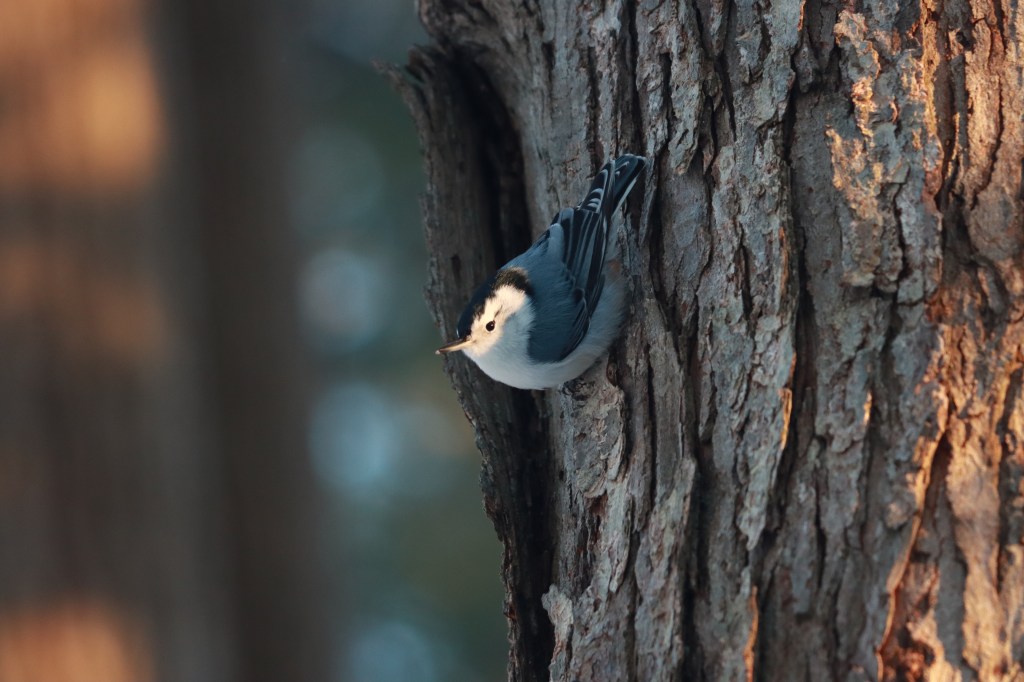
In addition to helping me connect with nature, birding has helped me connect with other people. Sharing the pictures of my sightings with my parents and other family members has brought me just as much joy as the act of birding itself. Since I started photographing birds and learning about new species, my small COVID “bubble” has developed a collective curiosity about backyard birds. We text each other updates on new birds at the feeder and share in the excitement when someone spots a rare species. Birding has given us something positive to chat about other than the pandemic or virtual teaching, like the bully White-breasted Nuthatches at the feeder, or updates on the latest sightings of the Red-bellied Woodpecker!
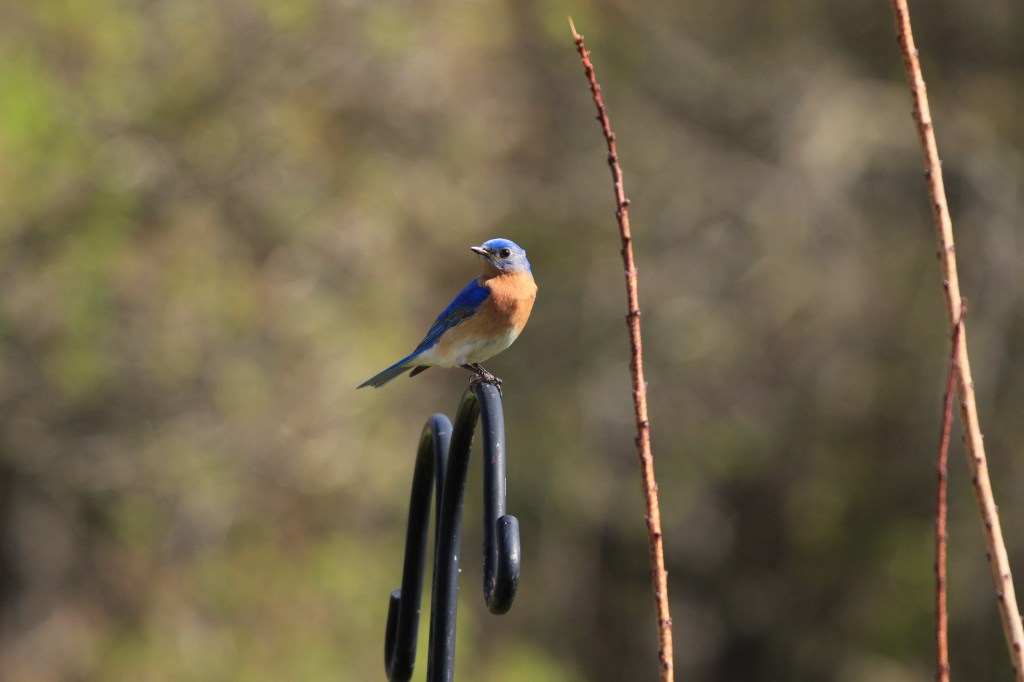
After I posted some photos on Instagram, a friend suggested that I register with eBird, a citizen-science conservation program managed by the Cornell Lab of Ornithology, to share my sightings with other birders and learn more about birds. eBird has introduced me to a wealth of local knowledge and has connected me with other birders in my community. eBird has even helped me to make new friends!

Life continues.

The pandemic has caused us to make changes to the lives we thought we would be living right now. Even for those of us who have been fortunate to stay healthy and keep our jobs, we have all experienced some level of grief or loss for the life we used to live, and for the future we thought we would have.
Many of us have referred to this pandemic life as being “on hold”. However, from watching the birds continue to migrate, mate, visit the feeders, and sing their songs, I realized that life goes on in spite of all of the global hardship.
While it takes a lot of work and resilience to accept the many tragic losses of the past year, life is not “on hold”. It continues, and it is up to us to make the most of what we are living right now.
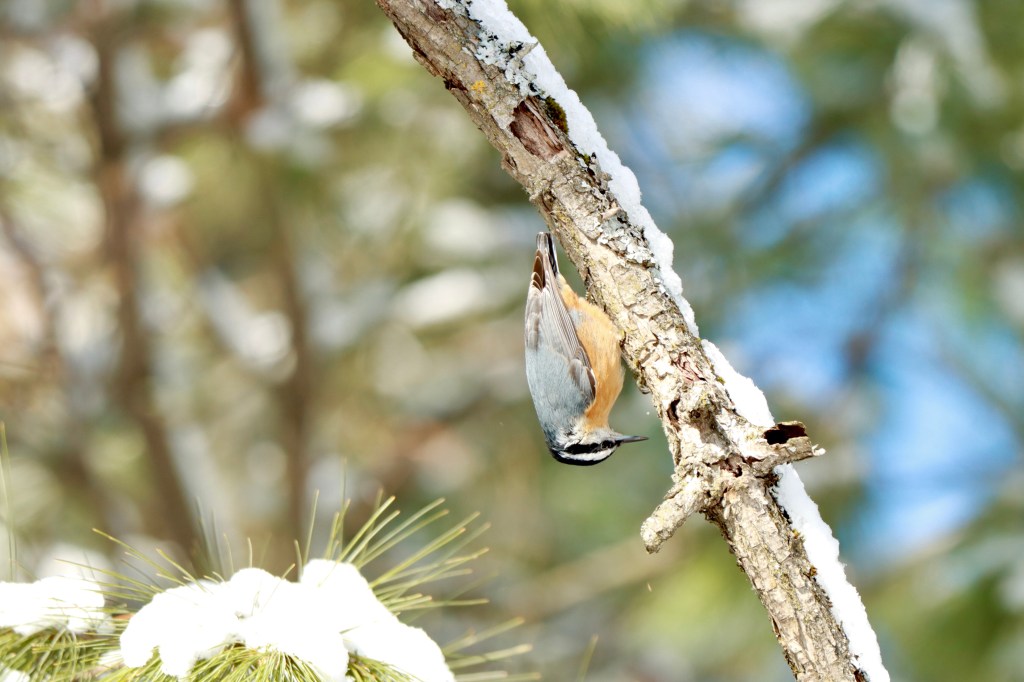
I have been fortunate and privileged throughout the pandemic to keep my job and my health. I haven’t experienced the tragic losses that so many have had to endure. Still, it takes a daily practice to remind myself that I am lucky when I feel sad.
One thing that has helped me foster a sense of greater gratitude was actively putting myself in the path of joy by identifying little moments in the day that make me smile—watching the chickadees come to the bird feeder or seeing a couple of geese swimming with their goslings. Many of my moments of joy in the past year involved birds.
***
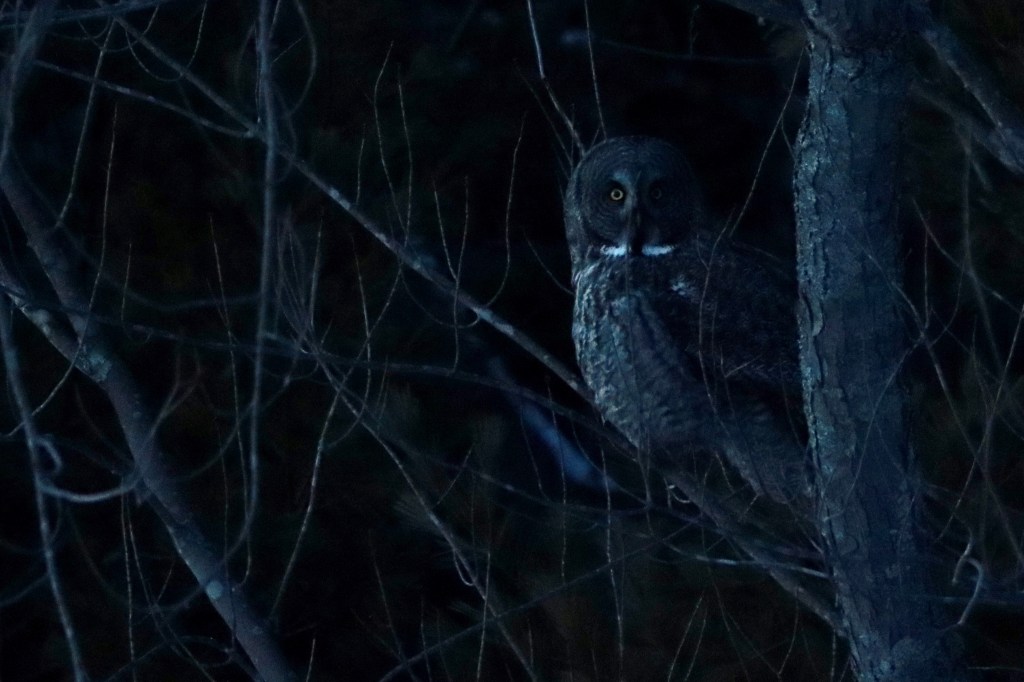
Maybe birding will become another one of my short lived passions like learning guitar, knitting, podcasting, and questionably blogging.
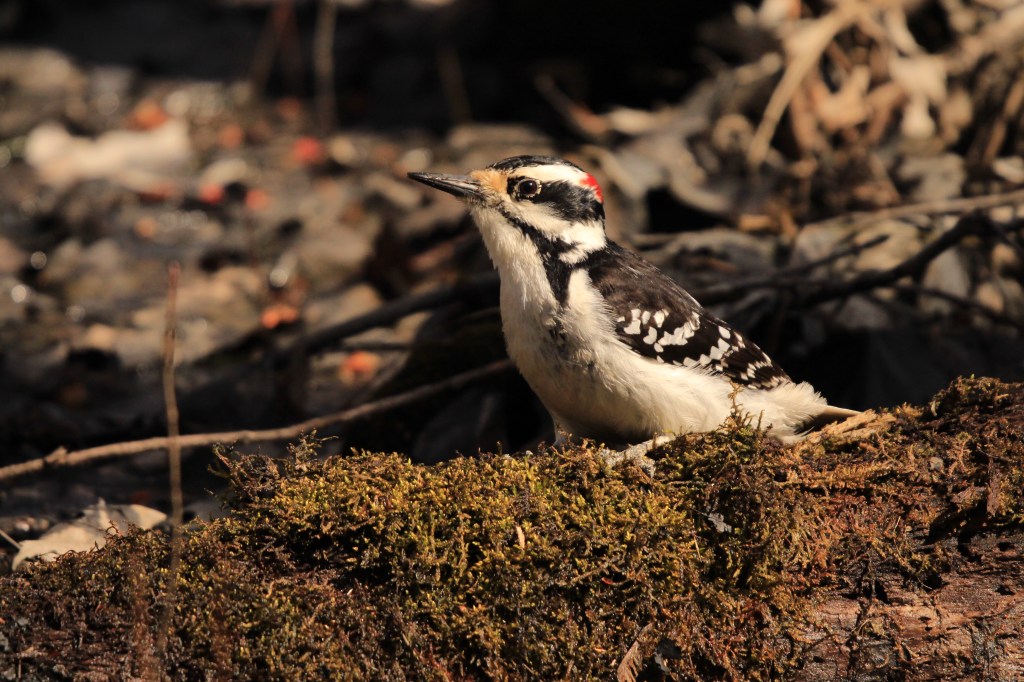
Regardless of birding’s future in my life, I am so grateful for all of the birds, for adding joy to my days and for teaching me to live life more fully during a difficult time in history.
Thank you to all of the people who shared in my love of birds and who encouraged my enthusiasm.
Shannon
Thanks for sharing.
I’ve survived the pandemic a little differently from you but our interests do cross.
Tom
Sent from Tom Holmes
LikeLike
Thank you! I think kayaking is one of those common interests!
LikeLike
I really enjoyed reading this…thanks for sharing 🙂
LikeLike
Thank you for reading Farah!
LikeLike
We all need reminding to live in the moment to find joy and peace. Thank you, Shannon, for describing this so beautifully! I am calmed by your words.
LikeLike
Hi Denise, thank you for reading! It is so hard to remember to live in the moment especially now that the ´moment’ has so many restrictions and limitations—but it has helped me be more appreciative of what I have and not worry as much about what I don’t have. Thanks for your comments
LikeLike